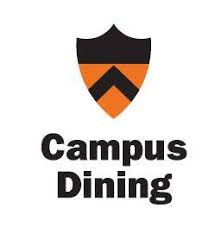Princeton Campus Dining Celebrates Cultural Diversity and Discovery

Successfully implementing Menus of Change principles at scale requires a systemic approach.
When Smitha Haneef, assistant vice president of university services, arrived at Princeton in 2014, she and her team identified a gap between the existing foodservice program and the broader community’s diversity goals, and quickly devised a plan to bring both in sync, helped by the Menus of Change principle that calls for celebrating cultural diversity and discovery.
Princeton’s 300-strong food team serves 18,000 meals daily through eight residence halls, 15 retail outlets, seven athletic concessions, and a multi-faceted catering program. To meet the diversity challenge, the process followed a chain of distinct, but integrated imperatives.
Seek Outside Partners
In addition to the peer resources available through Princeton’s membership in the Menus of Change University Research Collaborative (MCURC), the university also worked with CIA Consulting, which conducted sensory training around a key MOC tactic known as the Dessert Flip, in which portion sizes are reduced in favor of more concentrated flavors, and healthier ingredients such as fresh fruit take on a greater share of the dish than ice cream, whipped cream, and other more indulgent items. These exercises provided a critical shared understanding and vocabulary around flavor dynamics and—most most importantly—deliciousness.
The CIA also joined Princeton’s Culinary Council’s regular monthly meetings, coached recipe- and menu-development sessions in Campus Dining’s Innovation Kitchen, and helped coordinate communications plans among stakeholders.
Get Internal Buy-in
Celebrating diversity inherently celebrates inclusion—which is also a key principle of successful change management. Haneef ensured that the Culinary Council, which would serve as an informal steering committee as well as a cross-departmental communications platform, had representation from all Campus Dining units and both culinary and non-culinary disciplines. Non-culinary titles included purchasing members who tracked down potentially hard-to-source new ingredients while keeping the overall list of SKUs and their costs under control. Representation also included members of the union’s bargaining unit, while line staff were invited to guided tastings to give feedback and become an extension of the marketing effort.
Test Ideas at Smaller Scale
Prior to engaging with CIA Consulting, Princeton’s Campus Dining team created some early wins by partnering with student organizations to host cultural heritage dinners, including African American, Asian Pacific, Latin, and Native American events—many of which became part of larger celebrations of global cultures. These tests uncovered challenges while they were still manageable, such as sourcing authentic gourds, Pima wheat, and tepary beans for the Native American menus. Along with the greater emphasis on plants dictated by these cuisines, several other wellness initiatives—such as a Crafted Burger made with 30 percent mushrooms—were rolled out campus-wide.
Develop a clear and transparent plan
After the initial feedback, Princeton and CIA Consulting mapped out next steps using a Critical Control Points (CCP) strategy to pinpoint the parts of a complex system that have the greatest effect on overall success. With an established presence on campus, but with strong upside for improvement, the campus catering was the next business unit selected for a more thorough overhaul.
Favorites such as barbecue, steak, and chicken menus received fresh new global options such as chipotle miso grilled tofu, ginger-and-soy marinated grilled hanger steak with sautéed bok choy and black rice, and chicken breasts with a choice of Latin, American, or Korean rubs and marinades. New themed events such as Brazilian Barbecue, Pan Asian Buffet, and Seafood Chorizo Paella Buffet were also added.
Now into their second full year, the results are trending positive: catering occasions have increased by 6 percent and total customer count by 20 percent.
Gather and pursue additional learnings
The catering initiative not only validated the importance of diversity, flavor, and plant-forward menuing, but it also spun off several additional takeaways. For instance, the team realized that their new focus on roasting vegetables for flavor and nutrition also resulted in water savings. Other waste-reduction tactics now include roasting and grinding of whole lemons as a base for a roasted citrus sandwich spread, and the use of trimmings to make savory cakes. Stealth health tricks include replacing sugar with fresh fruit in recipes and launching a line of agua frescas for day-long hydration.
These learnings are now being incorporated into the retail dining concepts at the Frist Campus Center, and Haneef is also committed to involving Princeton’s research faculty in studying the program’s long-term benefits.
At Your Service
Contact us to access our 80 years of food intelligence, and turn our thought leadership into your reality. Simply fill out our contact form and a CIA consultant will get right back to you.
If you’d rather talk in person, give us a call at
845.905.4423

